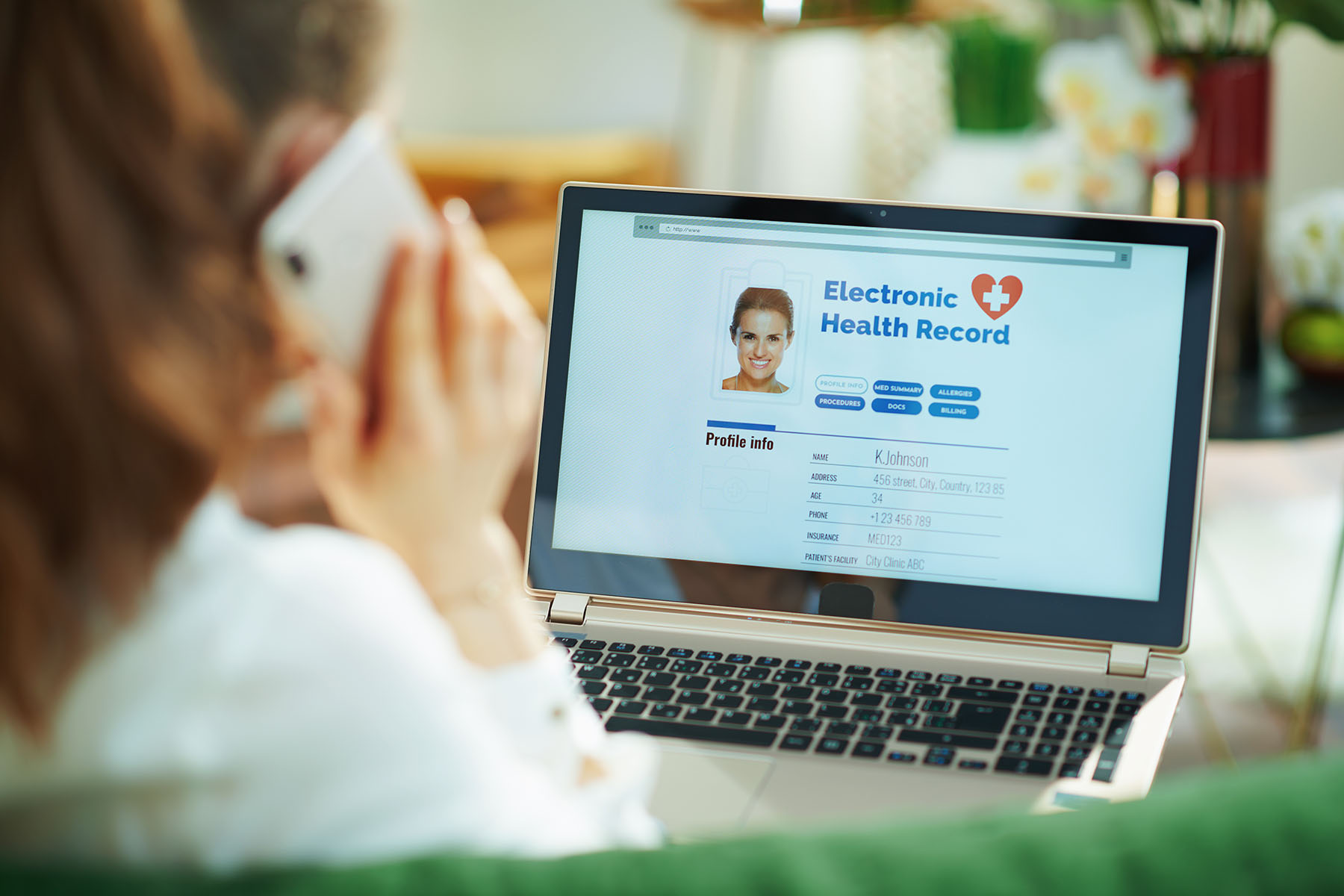Why We Store Medical Records in the Cloud

With the implementation of the 21st Century Cures Act, electronic health records are quickly and easily accessible to patients and their doctors. This means that your lab test results, imaging scans, and doctor visit summaries are entered into an online system you can view with a click.
“No more holding on the phone to get test results or get a copy of a visit summary,” says Alyssa Lawrence, executive director of privacy and compliance with the University of Miami Health System. “These systems also generally have the ability to send your provider a message or ask a question. This allows patients to ask non-urgent questions without connecting via phone or coming in to see the provider unnecessarily.”
When the Cures Act was signed into law in 2016, its primary goal was to promote transparency between providers and patients to ensure that we have flexible access to our own healthcare information. This gives patients important, time-sensitive information and more control over their own health.
Is too much information a bad thing?
In many situations, this immediate access is granted before doctors have a chance to contact patients to discuss test results, treatment options, and realistic outcome expectations. Patients may be notified online of life-changing diagnoses without understanding the whole picture of their overall health.
Lawrence says you should feel confident that your healthcare providers are also reviewing your electronic medical record.
“Providers do not rely on the patients to interpret their own results and decide to make a follow-up appointment,” she says. “On the contrary, your provider is responsible for explaining and interpreting those results (particularly concerning ones) to you in a timely manner. You should try — easier said than done, of course — to allow your provider the time to make the proper diagnosis and treatment plan. If you’re concerned about results, you are always welcome to use the patient portal to send a message to your provider or make an appointment.”
If you’re worried about a recent blood/urine test, biopsy, MRI, mammogram, or CT scan, you can choose to speak with your doctor before reading the report in your electronic file.
Enhanced records point toward better health.
The hope? This increased access leads to healthier patients.
It’s easier to ignore underlying health problems when you don’t know you have them. Once you’re aware of your health status and unique risk factors, you can consult with doctors and wellness practitioners about lifestyle and medication changes to improve your feelings and your expected outcomes.
With patient names removed for privacy, electronic records can also contribute to national public health databases. These organizations use data analytics to improve diagnostics, track and predict treatment effectiveness, advance medical research, and enhance our understanding of disease risks and prevention efforts.
UHealth and other institutions contribute data to All of Us Research. This program, led by the National Institutes of Health, is building one of the largest biomedical data storage hubs with contributions from a diverse group of U.S. participants. Registered researchers can access this data to conduct studies to advance our understanding of human health. This enables researchers to account for patient health differences related to age, race, sex, and ethnicity and helps reduce related health care disparities.
With the ease of access comes the potential for abuse.
This way, your electronic medical records are much like your online banking and credit card information. “Any electronic system has risks to privacy, and any system has the capability to be compromised by bad actors,” Lawrence says.
“Cybersecurity remains a top priority at UHealth, and we are constantly working to strengthen our network and systems to protect our patient data. In addition to IT safeguards, UHealth has strong policies and procedures to ensure that employees are properly trained on how to safeguard patient privacy. UHealth’s department of Compliance and Privacy uses artificial intelligence to constantly monitor all patient charts to detect unauthorized access — something that could not be done with paper records/hardcopy files.”
Dana Kantrowitz is a contributing writer for UHealth’s news service.
Tags: access to records, EMR, in the cloud, medical documents
